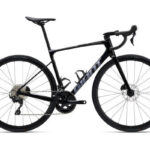Embarking on the Electric Fat Bike journey at 63, and residing at a lofty 8,400ft elevation in the Eastern Sierra, I was initially skeptical. My foray into eMTN biking had been ongoing for over a year, yet every ride felt like an uphill battle. Inspired by a friend’s analog fat bike, I decided to explore this new avenue. However, my first attempt on his conventional fat bike proved challenging, failing to conquer my usual 1,000ft climb over 7 miles. This led me down the rabbit hole of researching electric fat mountain bikes, ultimately discovering the Borealis Keystone. After weeks of deliberation, I made the purchase in early November 2024.
Navigating the options for tires and wheels was initially daunting. Thankfully, the Borealis staff provided exceptional support, patiently discussing my riding style and needs to guide me towards the optimal configuration: 26” wheels paired with 4.8” tires.
The arrival of my electric fat bike was delayed by three weeks at my request due to travel. Upon its arrival, I was impressed by the meticulous packaging. Setting up the bike in my workshop took approximately four hours – a testament to my deliberate pace and the fact it was my first bike assembly in decades. I did encounter a minor hiccup with the head tube rings’ sequencing, but a quick call to the shop resolved the issue swiftly and efficiently. One unexpected detail was the absence of pedals; acquiring a set took a few additional days. [Recommendation for Borealis: Offering pedal options or a “pedal opt-out” choice during purchase, similar to tire and wheel selections, would enhance the customer experience.]
From the first ride, the Borealis Keystone electric fat bike has surpassed all expectations. Its handling is remarkably sound, inspiring confidence on diverse trails. The shifting and braking systems operated flawlessly right out of the box, requiring no user adjustments. Whether ascending steep inclines or descending challenging slopes, the bike instilled a sense of control and security.
Battery performance and range have been thoroughly tested. One ride, lasting 1 hour and 43 minutes with a significant 2,746ft elevation gain over 14 miles, consumed only 40% of the battery. Following this, I embarked on a more demanding 3-hour ride, tackling 3,865ft of elevation gain across 25 miles. On this longer excursion, pushing the limits with predominantly ECO mode and occasional TRAIL and BOOST assistance, the battery depleted in the final half-mile. Based on these experiences, riders requiring more than 5 hours of ride time, exceeding 6,600ft of elevation gain, or covering distances beyond 40 miles on soft tire pressures (3-5 psi) might consider carrying a supplementary battery for extended adventures.
The versatility of this electric fat bike is truly remarkable. During the aforementioned rides and others, I encountered a wide spectrum of terrains: snow, ice, sand, rock gardens, slush, hardpack road base, gravel, asphalt, and even a 12” deep creek. Across these varied surfaces, the only instance of losing control occurred while crossing the creek, where an unforeseen deep rut caused me to dismount. On separate occasions, icy patches led to minor slips, highlighting the importance of tire studs for dedicated ice riding – a lesson learned firsthand.
In essence, there appears to be no terrain this bike cannot conquer. While studs are advisable for icy conditions, the Borealis Keystone electric fat bike demonstrates exceptional capability across the board.
Recently, I noticed a softness in the rear brake, with the lever pulling back to the handlebar. This necessitated an early end to a ride. A local bike shop will bleed the brakes tomorrow morning, and I anticipate being back on the trails by afternoon.
For anyone seeking exhilarating mountain adventures or aiming to extend their riding season to a full 12 months, the Borealis Keystone electric fat bike is an outstanding choice. It’s more than just a bike; it’s a gateway to year-round cycling enjoyment and unparalleled terrain versatility.


